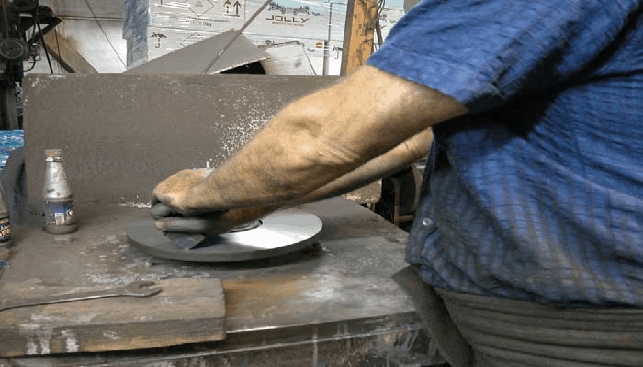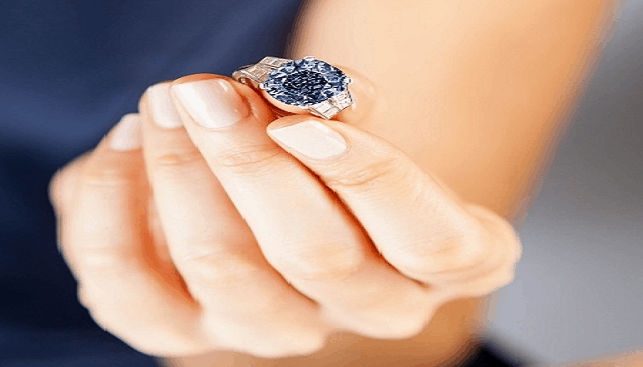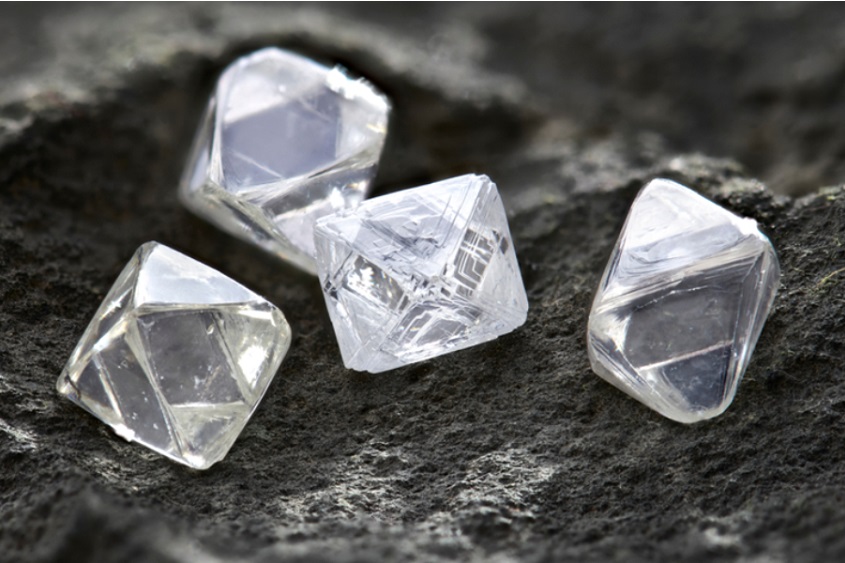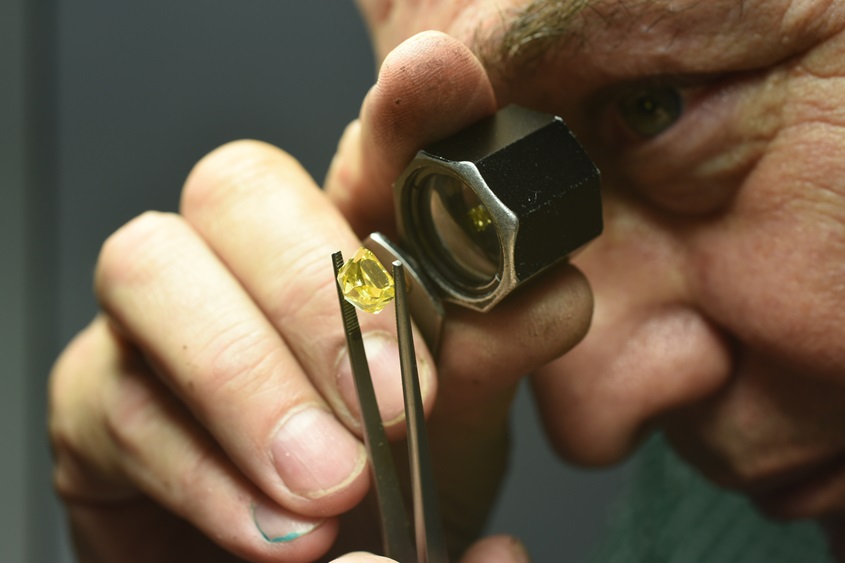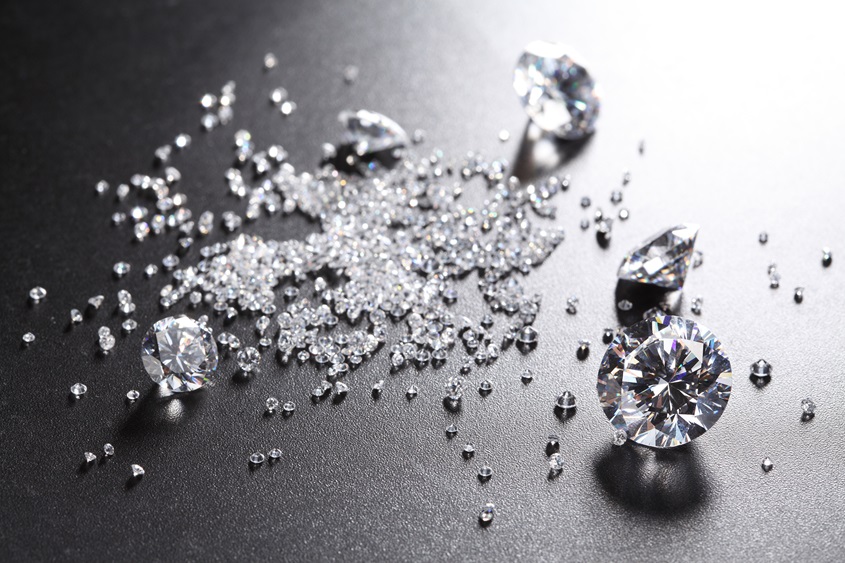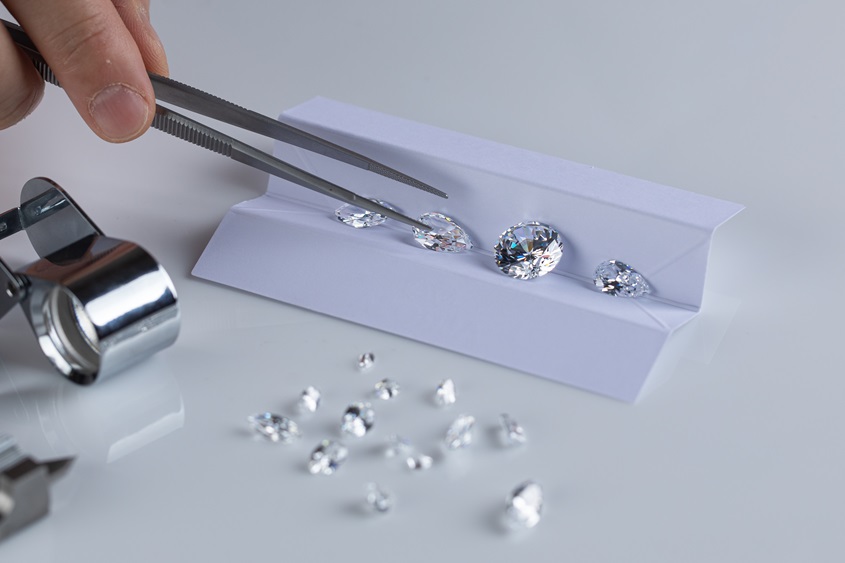The polishing wheel is a cast iron disk upon which diamonds are polished. Its diameter ranges between 30-35 cm. and its width is about 2 cm. It revolves rapidly at a speed of 3,500-5,000 rotations per minute. In Israel, cast iron wheels are the most widespread although wheels are sometimes made from other metals. For polishing purposes, diamond powder is spread on the polishing wheel combined with oils and glues. The polishing wheel is positioned horizontally on the polishing table. Two methods are used to generate rotation – one uses straps connected to a motor placed underneath the table, and the other enables direct linkage to the motors.
The diamond polishing process using a polishing wheel sprinkled with diamond powder is widespread and quite old – there are testimonies according to which this diamond polishing method existed as early as the 14th century. Although the process is not new and is very prevalent, science has not yet found an explanation for the process that takes place during the meeting between the polishing wheel and the diamond in the polishing process: Is it a whetting, chemical or thermal process? Or is another process altogether? In any case, it is universally accepted that a superior and quiet polishing wheel ensures qualitative diamond polishing with less cracks or heat on the stone.
Another advantage of a top-quality polishing wheel is the longer life span of the disc, which from time to time needs to be reconditioned. This is due to the fact that the diamond powder wears out during the polishing process. After the polishing, diamond powder is again applied to the polishing wheel. The accuracy and leveling of the polishing wheel impact significantly on the quality and duration of the polishing process. For this reason the Israel Diamond Technology Center (IDT) of the IDI group has developed a sophisticated system for leveling polishing wheels.

